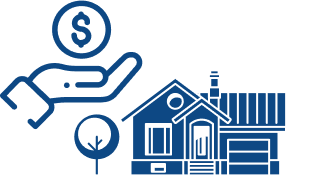The Coronavirus Aid, Relief, and Economic Security Act, also known as the CARES Act was passed in the early stages of the pandemic in response to the economic uncertainty caused by the virus. The CARES Act established a 2.2 trillion dollar fund that targeted both businesses and individuals, to help with economic survival and, later, recovery.
The CARES Act also included mortgage forbearance and eviction moratoriums, which were put in place to help fight homelessness. Mortgage forbearance is when a mortgage service provider allows a borrower to reduce or pause their monthly mortgage payments.
This is what was happening for two years: many people who were having financial difficulties stopped paying off their loans. When the economy was showing signs of recovery in late 2021 - moratoriums and forbearances started to expire. This is why there is a 700% increase in foreclosure rates in January 2022, compared to January 2021.
Although this number seems large, it is because January 2021 had an artificially low foreclosure rate. The foreclosures are still significantly lower than they were before the pandemic. 32,900 loans were referred to foreclosure this January, which is 20% less than 42,800 in January 2020.
Is There a Reason to Worry?
Many people wonder if this sudden spike in foreclosure rates is indicative of a housing bubble burst. Experts say there is no reason to panic but being cautious and making the right real estate decisions is necessary.
As you may know, the burst could happen if the supply overachieves the demand, which is not happening in today’s housing market. However, there are signs that demand is slowing down due to rising rates and macroeconomic uncertainties. Fannie Mae reports an increase in overall pessimism among potential home buyers.
The inflation will continue to increase the prices of the consumer basket, gas, oil, and homeownership. People are not going to be able to afford their houses, and the property tax is going to increase, too. This could bring more foreclosures in the future, which will create more supply in the market.
If this circle repeats itself enough times, the US housing market could see more supply than overall demand, and then there would be a real reason to worry. Real estate professionals are explaining that the 2008 scenario will not happen because today’s borrowers have more credit and the background checks are more rigorous.
Today’s Numbers and Predictions
It might be comforting to know that half of the borrowers who received a foreclosure notice this January were people who had been delinquent before March 2020, so their foreclosure was just postponed.
Another thing that shines a positive light on the future of the housing market is the drop in the national delinquency rate by 9%. Additionally, the number of cases with seriously past due mortgage payments dropped by 87,900.
This suggests that even though there is a high spike in foreclosure notices, the borrowers will be able to get out of the foreclosure process before it gets to auction and eviction. With the national delinquency at 3.3% and the unemployment rate at 3.6%, the housing market will most likely not crash in the foreseeable future.
SELL
YOUR HOUSE
If you want to sell fast and are worried about how long the traditional process takes, and the commission and fees involved, consider working with SleeveUp Homes.





 view all blogs by this author
view all blogs by this author Zachariah Peterson (69 blogs)
Zachariah Peterson (69 blogs)